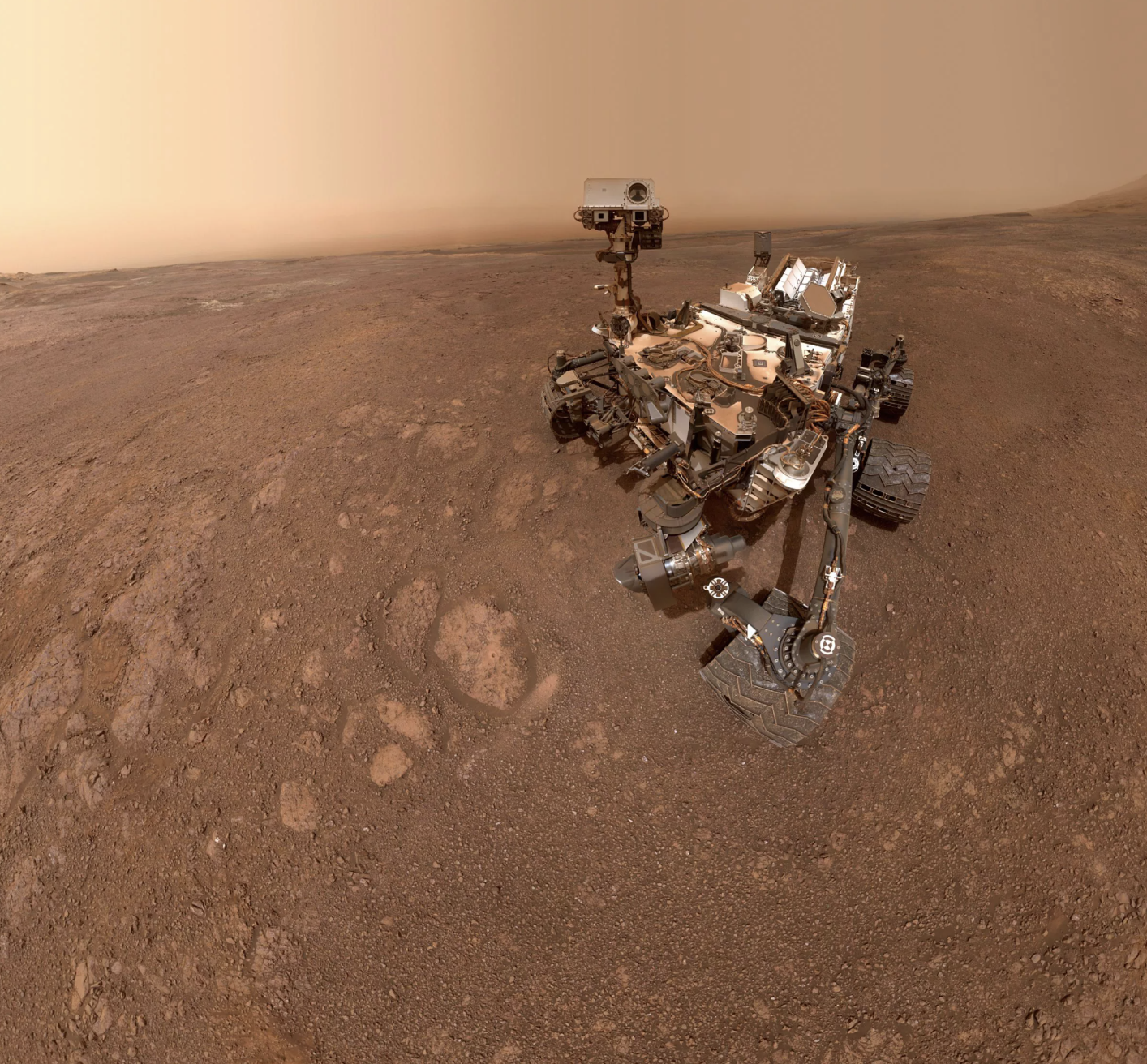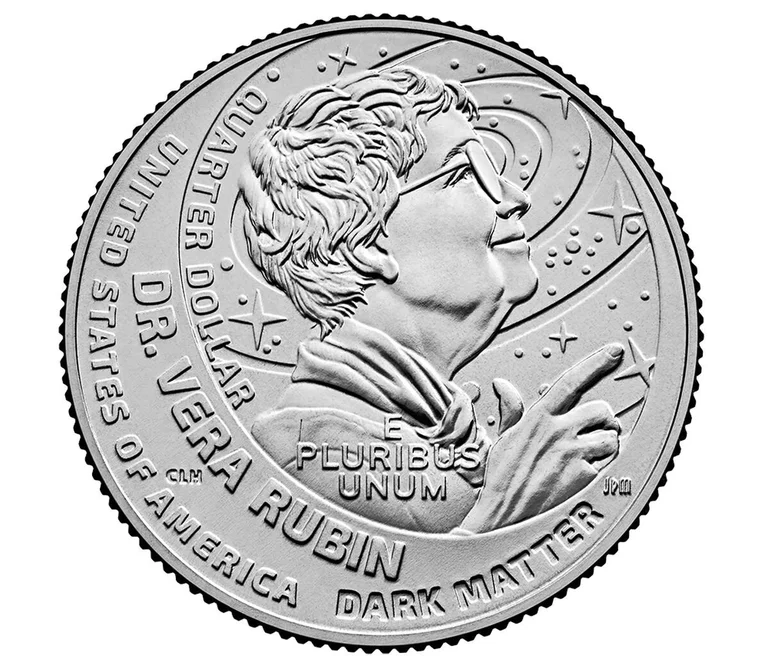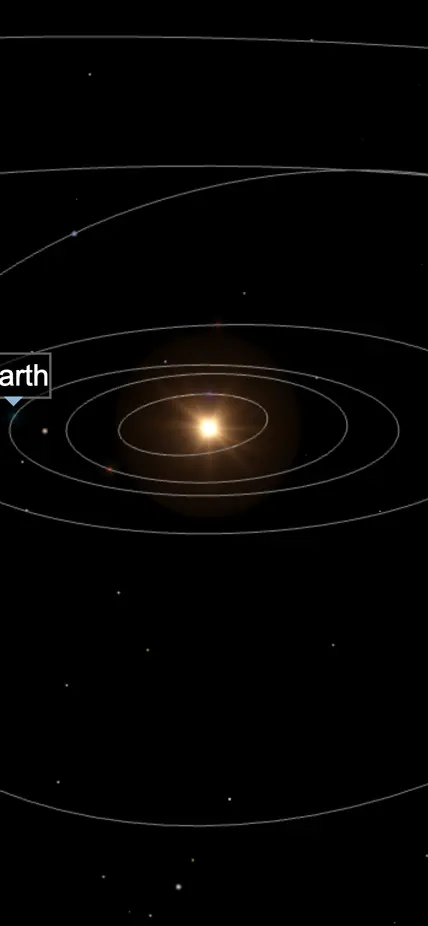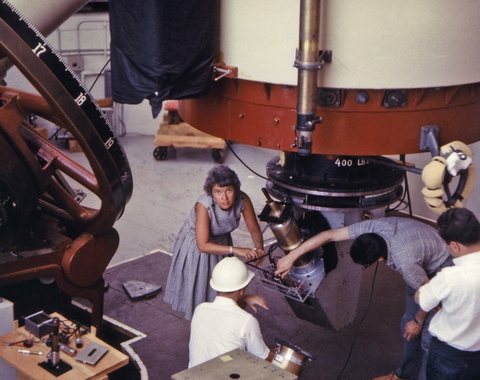Long before Carnegie astronomer Vera Rubin was awarded the National Medal of Science in 1993, the scientific community had come to understand her groundbreaking contributions to our understanding of the universe. In collaboration with Carnegie Science colleague Kent Ford, Rubin’s extraordinary work on the rotation of galaxies served to confirm the existence of dark matter—the invisible material makes up more than 90 percent of the universe’s mass. In the decades since that discovery—and the years since her passing in 2016—scientists and organizations have sought to recognize her legacy through a wide range of named tributes.
She is immortalized in a number of astronomical objects, awards, and projects, including:
Vera C. Rubin Observatory

Perhaps the largest of such honors is the Vera C. Rubin Observatory, a cutting-edge facility built in collaboration between the National Science Foundation and the U.S. Department of Energy that amounts to one of the most powerful suites of astronomical instruments in existence.
Situated high on Chile’s Cerro Pachón mountain, the Rubin Observatory will seek to answer cosmic mysteries that remain in four key areas: understanding the nature of dark matter and dark energy; creating an inventory of the Solar System; mapping the Milky Way; and exploring objects that change position or brightness over time. Together, the scientific community and science-interested public anxiously await the advancements the observatory will deliver under Rubin’s name.
Vera Rubin Ridge

This wide, 6.5-kilometer stretch of land on the northwestern side of Mars’ Mount Sharp was informally named for Rubin in early 2017. NASA published a series of 112 images captured by its Curiosity rover on April 4, 2017, as well as a panorama photo captured after sample collection on August 9, 2018. The mountain is located within the planet’s Gale crater.
Nvidia Rubin Superchip
Chip manufacturer Nvidia announced in March 2025 that its latest AI superchip, launching in 2026, would be named Vera Rubin. The chip will contain two components—a GPU named Rubin and a CPU named Vera—and is scheduled to be improved into the Ultra Vera Rubin the following year with expected performance of 100 petaflops.
Vera Rubin Early Career Prize
Awarded by the American Astronomical Society’s Division on Dynamical Astronomy (DDA), the Vera Rubin Early Career Prize was created in 2016 and is given annually to, “an early career dynamicist, who demonstrates excellence in scientific research in Dynamical Astronomy or closely related fields, which has had impact and influence on these fields, and shows a promise of continued excellence as demonstrated by past practice in research, teaching, and the advancement and support of the field of Dynamical Astronomy,” according to the organization’s website. In addition to an honorarium and certificate, the recipient is invited to give a lecture at an annual meeting of the DDA.
Vera Rubin's U.S. Quarter

The United States Mint released a quarter dedicated to Rubin into nationwide circulation on June 3, 2025. The quarter, which is part of the American Women Quarters Program, depicts Rubin smiling in profile and staring up toward the cosmos, which swirls behind her. The words “Dark Matter” recognize her contribution to that research.
Asteroid 5726 Rubin

Asteroid 5726 Rubin is a mid-sized asteroid, measuring approximately 5.2 kilometers in diameter, located in the belt between Mars and Jupiter. The asteroid was discovered in 1988 by Carolyn S. Shoemaker at Palomar Observatory—where Rubin broke the gender barrier for women astronomers—and later named in her honor.
Vera Rubin Memorial Fund
Founded and funded by Rubin’s friends, the Vera Rubin Memorial Fund supports postdoctoral fellowships at Carnegie Science Earth & Planets Laboratory. A passionate promoter of inclusion in science, the fund ensures early career scientists are given the space and resources to hone their skills in the same labs and community where Rubin made her transformational discoveries. You may contribute to the fund here.

![Vera Rubin at Lowell Observatory, 69-inch [i.e., 72-inch] Telescope (Kent Ford in white helmet)](/sites/default/files/styles/banner_small/public/2024-09/DTM_VR-B-011_19650000.jpg.webp?itok=mnxhPCuM)

